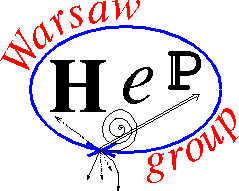SEMINARIUM FIZYKI WIELKICH ENERGII
Dnia 25 października (piątek) o godzinie 11:30, w sali B2.38 odbędzie się seminarium, na którym zostanie wygłoszony referat pt.:
„Dependence of the radio emission of air showers on the cosmic ray primary particle composition”
Referuje: dr Washington Rodrigues De Carvalho jr. (IFD,UW)
Abstract: We will start with brief introductions to Cosmic Rays (CR),extensive air showers and their radio emission. We will explore the origins
of the dependence of the air shower development on the primary CR composition and how it affects the radio emission. We will then proceed to
describe in more detail our newest work regarding a strong composition dependence on the measured radio signal amplitudes at ground level. This
simple, yet historically overlooked dependence can be explained in terms of two competing scalings of the measured electric field that depend on the
position of the shower maximum (Xmax) in the atmosphere. This dependence can be used to directly infer the CR primary composition, even on a non-standard
event-by-event basis.
Serdecznie zapraszamy
dr hab. Katarzyna Grzelakprof. dr hab. Aleksander Filip Żarnecki

